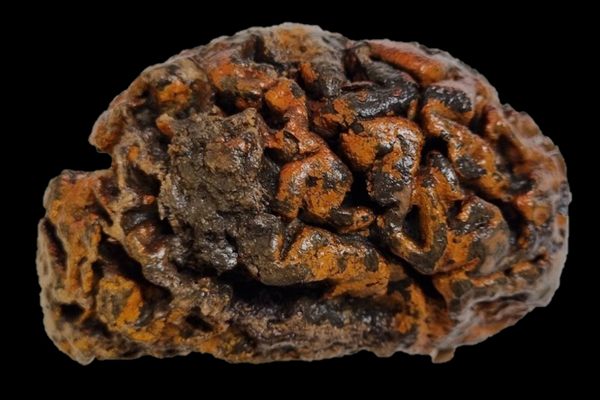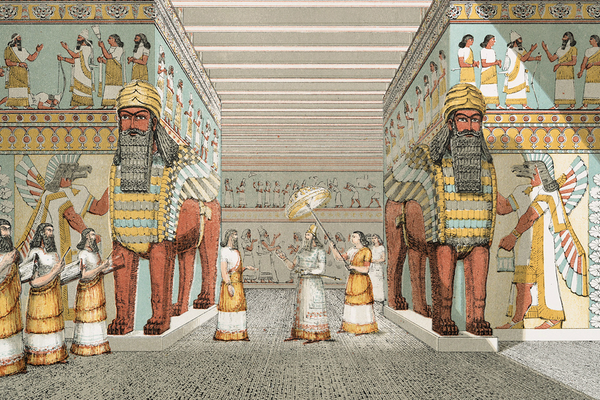Gladiator School: When in Rome, Fight Like a Roman
A procession of gladiators at the Gruppo Storico Romano (courtesy Gruppo Storico Romano)
“Are you ready to time travel?” Marcus Valerio Messalla Barbato by day, Pietro Giusti by night, beckons 10-year-old Joshua. The Canadian boy sets his iPad to one side and seizes a rudis — or gladiator training sword. The time clock is set to the First century AD and the setting is Ancient Rome. Tucked away on a side-street of the Appian Way, one of the most crucial and strategic Roman roads, the Gruppo Storico Romano (Historic Roman Group) has been recreating history for almost 20 years.
Entrance to the school (photograph by the author)
A Russian interpreter hands another boy, Sasha, a certificate granting the seven-year-old from Moscow official Roman citizenship. Scorpius is his newly appointed Roman name. Joshua and Sasha’s proud parents attend the ceremony in the circular dirt grounds, dust filling the air. Marcus Valerio draws his sword and lunges swiftly in attack. The boys watch in awe.
“It’s Joshua’s birthday today and we thought the lesson would be a great present for him,” says Joshua’s mother, Paula Jeffers, who found out about the school on the travel website viatour.com. Two hours later, stripped of the traditional gladiator tunic, belt, leather protective glove, and rudis, but firmly gripping his Roman citizenship, Joshua returns to his iPad.
Nero and a Roman watermill model (photograph by the author)
Not far from the fighting ring, a serene, grey-haired man is refining a model of a Roman watermill. His hands run skillfully along the wooden planks holding up the structure.
“The Romans were the most ingenious society of modern times,” Sergio Iacomoni, aka Nero, says proudly. He is the founder, creator, and indefatigable leader of the group.
Marcus Valerio Messalla Barbato in the armory (photograph by the author)
“I was working at the Bank of Italy and, while most of my colleagues spent their free time playing bridge, golf, and tennis, me and four other co-workers decided to make 5 costumes of ancient Romans and test them out on a Sunday morning at the Colosseum. From that first time, I knew it would be successful,” Nero says. More than 800 people signed up to the group within the first year, including many of his former colleagues. The school was built as a modern reproduction of the castrum, a Roman military defense camp. Founded on a private plot of land, the group is entirely self-sustained through the private and group gladiator classes and the commissions for events, nationwide and abroad.
Gladiator garb in the museum (photograph by the author)
The lessons include a tour of the museum, where a collection of 294 Roman memorabilia objects, including reproductions and originals, is on display. An adjacent room stores the armory of the legionary members of the group. Another hut-like structure hosts the weekly Curia Senatoria — or Roman Senate — where twelve “Senators” meet each Thursday to discuss the day-to-day activities of the camp. But one event above all requires special care and attention: the birth of Rome, when thousands of members of the Roman army and society come together from all over the world to march on the Eternal City in celebration of its birth on April 21, 753 BC. Legionaries, gladiators, Praetorian Guards, centurions, consuls, vestal virgins, and other members of Roman society parade on the streets of Rome, reenacting scenes from its history.
courtesy Gruppo Storico Romano
On April 21, 2014, while Rome celebrates 2,767 years from its foundation, the historic Roman Group will be toasting to its 20th birthday. People from all walks of life have become members of the group in the years, from attorneys and high-profile bank managers, to electricians and pensioners.
“This is like a parish, you’ll always find a partner in crime,” Nero says. He claims the school has therapeutic effects on its participants, who forget their modern day struggles and allow themselves to delve into their magical history.
“After 20 years, even my son calls me Nero,” he says. Then he eagerly adds why he chose to identify with the former emperor, Nero, who was wrongly accused by everyone for starting a great fire that destroyed most of Rome in 64 AD.
Gladiator combat (courtesy Gruppo Storico Romano)
For the more adventurous, the group also offers a live-in experience at the camp. But clients are warned, as a general rule, no anachronistic objects such as watches or phones are allowed on-site. That would upset the gods, for sure. The school has also recently launched a Spartacus-style evening show, including live gladiator fighting re-enactment, traditional dances, and a typical Roman meal served with honeyed wine. Finally, the group also specializes in re-enactment of rites such as the Roman funeral, the Ides of March, and the testament of Augustus.
“We work for fame or for famine,” Nero says as he bursts into a hearty laugh,“if I’d been a spiritual leader or a magician I would’ve made a lot more money.” For the time being, however, the school is banking in on its success and Nero, despite his 62 years, is still reigning strong. The group’s 160 members have no reason to fear the fall of the last great Roman emperor of modern times.
Helmets in the museum (photograph by the author)
Legionary armor (photograph by the author)
Remus and Romulus in the museum (photograph by the author)
Siege device models in the museum (photograph by the author)
View of the museum (photograph by the author)
Marcus Valerio Messalla Barbato in the museum (photograph by the author)
Legionary helmets (photograph by the author)
Legionary in the museum (photograph by the author)
Appian Way park near the school (photograph by the author)
To learn more about how you can fight like a Roman in Rome, visit the website of Gruppo Storico Romano (Historic Roman Group).









Follow us on Twitter to get the latest on the world's hidden wonders.
Like us on Facebook to get the latest on the world's hidden wonders.
Follow us on Twitter Like us on Facebook